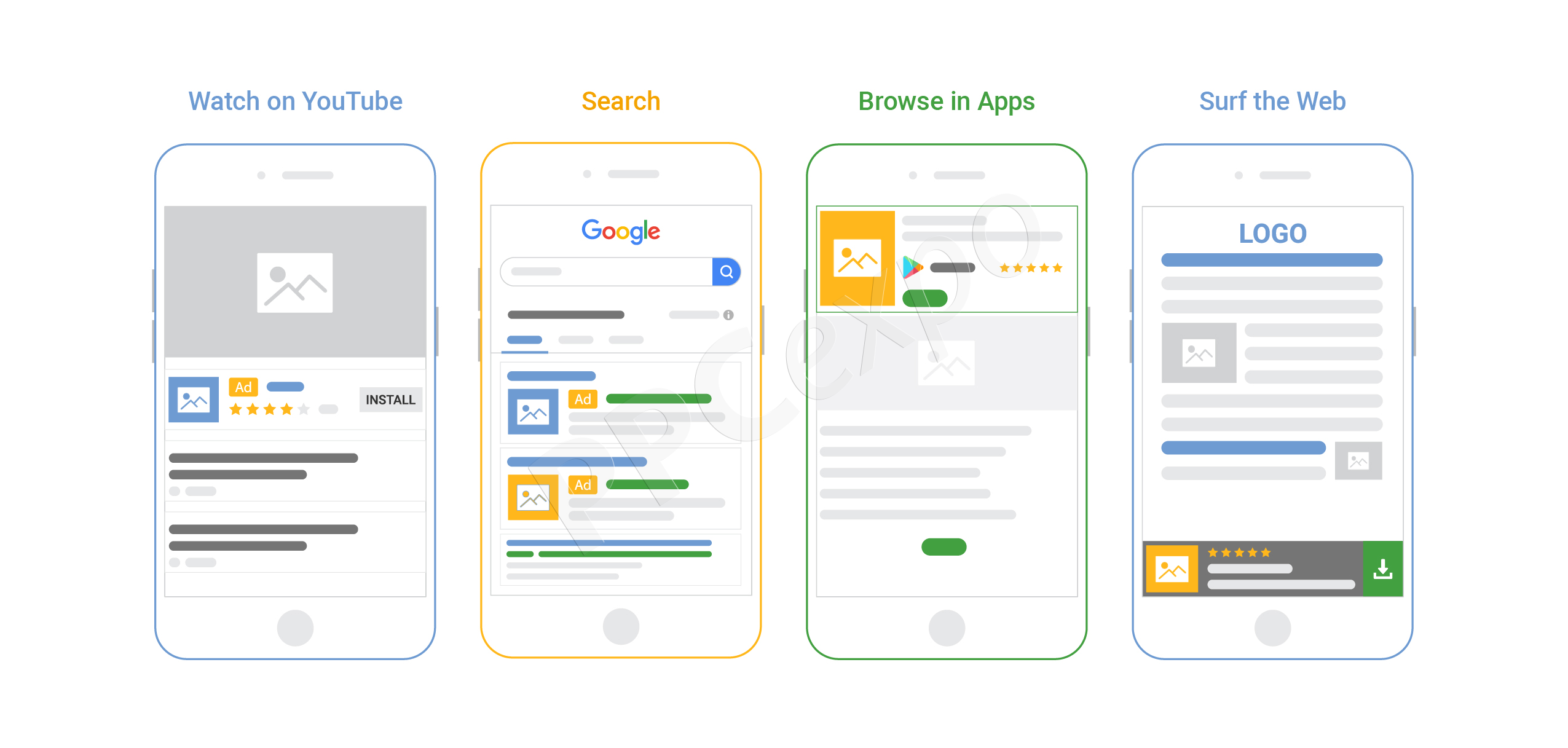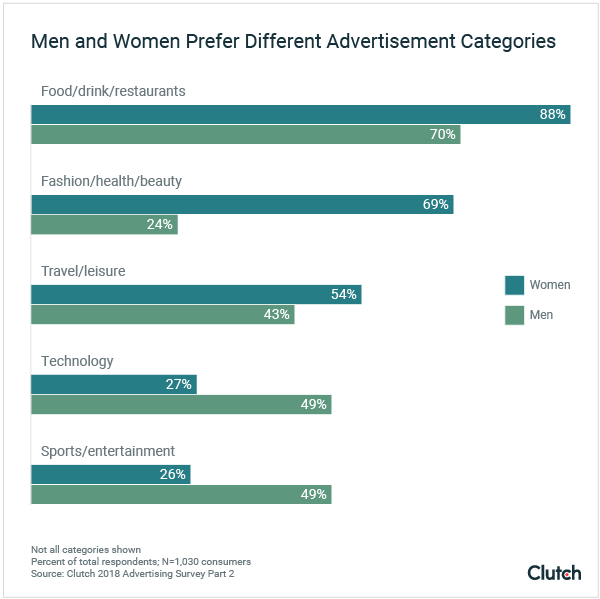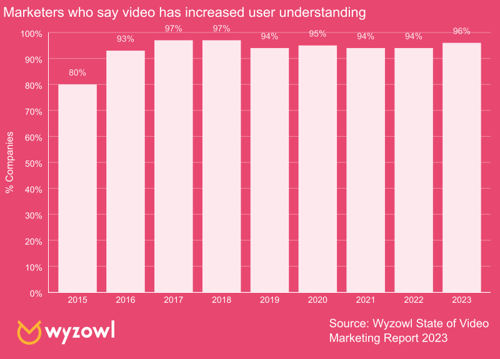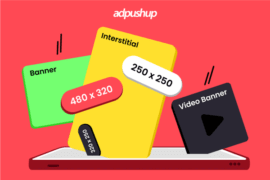Looking to drive engagement with your digital advertising campaign? Find out which ad format is the most effective in capturing users’ attention and driving engagement. From video ads and interactive ads, we’ll discuss it all.
Looking to drive engagement with your digital advertising campaign? Find out which ad format is the most effective in capturing users’ attention and driving engagement. From video ads and interactive ads, we’ll discuss it all.
Digital advertising has come a long way. With the advancements of technology, brands or advertisers now have multiple ways to advertise on the internet and that too with different ad formats.
There is a plethora of ad format that advertisers can choose from to promote their products or services. However, not all ad formats are created equal, and some tend to be more effective compared to others at grabbing the users’ attention and driving engagement.
Today in this blog post, we’ll delve into some of the most common ad formats and their various types, and take a look at what people tend to prefer when it comes to ad content.
So, whether you’re a marketer or a curious consumer wondering what makes a good ad, stick to the blog, and discover the fascinating world of ad formats. But first, let’s quickly understand what is an ad format.
Also Read – Innovative Ad Formats Guide – AdPushup
What is Ad Format?
As the name suggests itself, ad formats are the many different formats where advertisers are shown to the users on the web. These are typically visual enhancements that are included in the search ads. This help display the information about your business more prominently and effectively.
There are plenty of ad formats that advertisers use to promote their products/services. These ad types are designed to serve different purposes, Here are some of the most common ad formats. Take a look.

Image Source – PPC Expo
Types of Ad Format
Banner ads: Banner ads are graphical ads that are shown on websites, typically at the top or bottom of the page.
Video ads: As the name suggests itself, these are ads that appear in video content, either before, during, or after the video.
Native ads: Next, native ads are those that are designed to blend in with the surrounding content, often appearing as sponsored content.
Text ads: These are ads that appear as text-based links, typically on search engine results in pages or on websites.
Pop-up ads: These are ads that appear in a separate window, typically triggered by user interaction with a website.
In-stream ads: These are video ads that appear during streaming content, such as on YouTube or other streaming services.
Rich media ads: These are ads that include interactive elements, such as animations or games, to engage users.
Social media ads: These are ads that appear on social media platforms, such as Facebook, Instagram, or Twitter.
Mobile ads: These are ads that are designed specifically for mobile devices, such as mobile banner ads, interstitial ads, or in-app ads.
That being said, let’s now take a look at the types of ads users prefer the most.
Also Check – Ad Format Gallery – AdPushup
What are the Types of Ads Format Users Prefer?
What ad formats do users actually prefer? Let’s take a look at some of the most popular ad formats that users tend to prefer.
Users Prefer Facebook Ads the Most
Facebook ads are native in format, appearing in user newsfeeds, and can be targeted by advertisers based on location, demographic (age, gender, workplace, job titles), interests (what users like), and behavior (their device usage and purchase history).
This level of targeting works well for consumer or technology companies going after a highly defined set of users. User targeting is hardly revolutionary though, as most banner, video, and search ad networks also offer it, but Facebook seems to be gaining a win with users because of its less intrusive in-feed ad-serving format.
In fact, according to a study by Social Pilot, it has been found out that about 2.11 billion individuals are reachable through Facebook ads.
Users Hate Retargeted Ads
As seen in the graph above, only 2% of users gave a nod to retargeted ads in the survey. Retargeting works by tracking users across the internet and displaying ads for products or services they may have previously expressed some kind of interest in. In addition to turning window shoppers into customers, advertisers also use retargeting ads to maintain visibility and brand recall. But users detest retargeting ads because they make them feel “watched” and are generally viewed as an intrusion of privacy.
People are very suspicious of retargeted ads. If you’re Googling ideas for a gift, and an advertisement for a website you just visited comes up, it can be creepy. We’re in the early stages of this, so it makes sense that this would be problematic for some people.
— Julie Wierzbicki, account director at Giants & Gentlemen
Men Prefer Tech and Sports Ads, Women Like Fashion and Travel
Knowing your audience can save you a lot of time and money in digital advertising, the survey results show that men are more interested in seeing advertisements related to technology and sports, whereas women are more engaged by ads related to fashion, beauty, lifestyle, and travel.

These insights can help advertisers create better-targeted campaigns with potentially higher engagement rates. Publishers that focus on specific content verticals can package their media to be more lucrative to specific brands and advertisers and thereby improve their ad sales pitch.
Everybody Likes a Funny Ad
Maybe it’s because funny ads form an emotional connection with viewers, but from the survey, it’s clear that it’s the most favorite type of ad by far. This also explains the success of Dollar Shave Club, a startup that relied on tongue-in-cheek videos for marketing that went viral on social media, the company was eventually acquired by Unilever for $1 billion. Another example is the widely acclaimed campaign by Old Spice that got its laughs from users by poking fun at hyper-masculinity.

Obviously, an ad that’s just funny and has no substance hardly ever works either. This is why users prefer to see ads from brands they already know and trust, other factors that increase ad likability include the need for the product, and how relatable and informative an ad is.
Which ad formats are most effective for driving engagement
The right ad format makes all the difference in advertising. In fact, when it comes to digital advertising, the ultimate goal is to come up with the ads that successfully resonate with the target audience and drives as much engagement as possible.
So which ad format you should opt for? What works best? Let’s find out.
Video ads
Video ads have been found to be very engaging and can be effective in grabbing users’ attention. As a matter of the fact, according to a study by Hubspot, video ads have a 56% higher click-through rate than other ad formats. By leveraging the power of sight, sound, and motion, video ads can convey a message more effectively than other formats.

Image Source – Wyzowl
Also Read – Types of Video Ads, Best Practices & How Are They Served
Interactive ads
Next in the list, interactive ads are designed in a way that allows the users to engage with the ad in a more meaningful way. Examples of interactive ads include quizzes, polls, and games. Interactive ads are effective because they encourage users to actively participate in the ad experience, leading to higher engagement rates.
Native ads
Native ads are designed to blend seamlessly into the content surrounding them. They are typically labeled as “sponsored” or “promoted” content, but are not overtly promotional in nature. Native ads are effective because they do not disrupt the user experience, and can be more engaging than traditional banner ads.
Social media ads
Social media ads can be highly effective in driving engagement due to the sheer volume of users on these platforms. Ads on platforms such as Facebook, Instagram, and Twitter can be targeted to specific demographics and interests, increasing the likelihood of engagement.
Incentivized ads
Last but not the least, incentivized ads are another type of most effective ad format. They simply incentivize the users by offering them a reward, such as in-game currency or a discount code, in exchange for engaging with the ad.
These ads can be effective in driving engagement because they provide a clear benefit to the user.
Frequently Asked Questions – Ad Format
An ad format is typically the structure and layout of an advertisement, including elements such as text, images, videos, and interactive features.
There is no single “best” ad format as the effectiveness of an ad depends on various factors such as the target audience, platform, and campaign objective.
The two main types of ad formats available in Google Display Ad Campaigns are –
A) Responsive Display Ads
B) Uplaoded Ads

Deepak has a keen eye for detail and a deep understanding of the ad tech landscape. Whether it’s through in-depth articles, thought-provoking insights, or compelling storytelling, he’s dedicated to helping people navigate the complex world of ad tech with the simplicity of his words.







